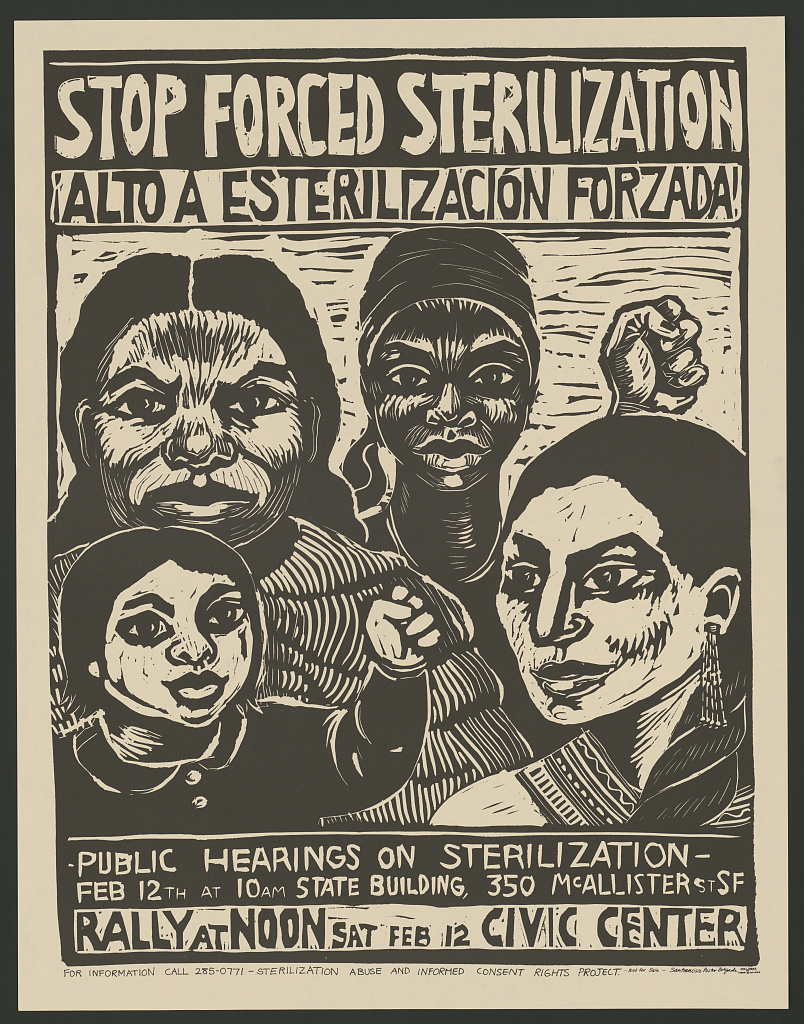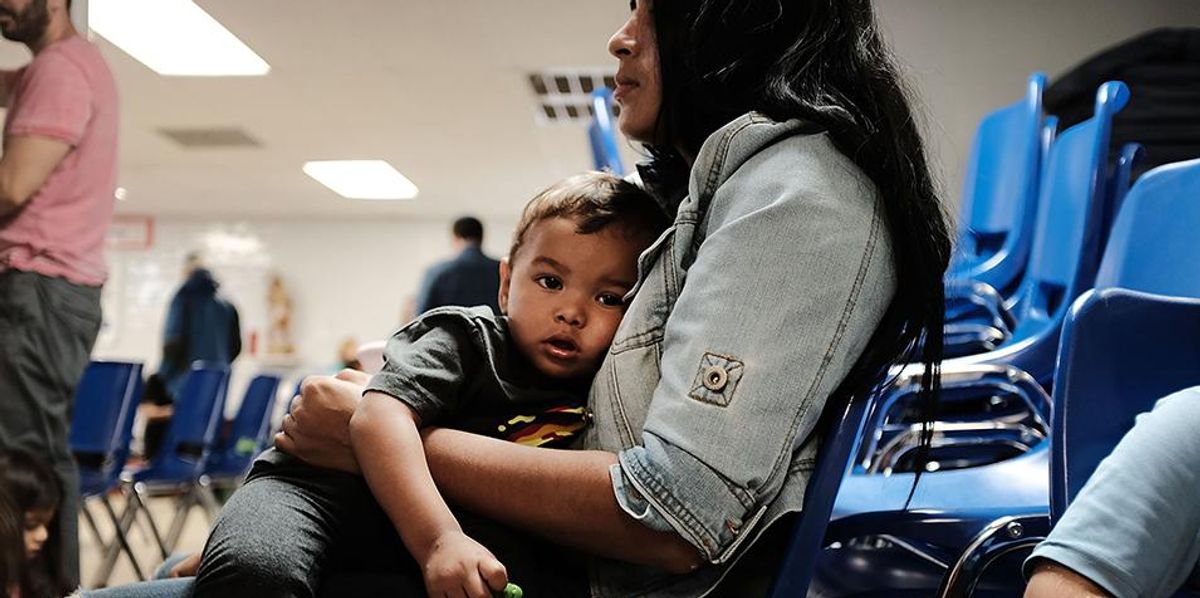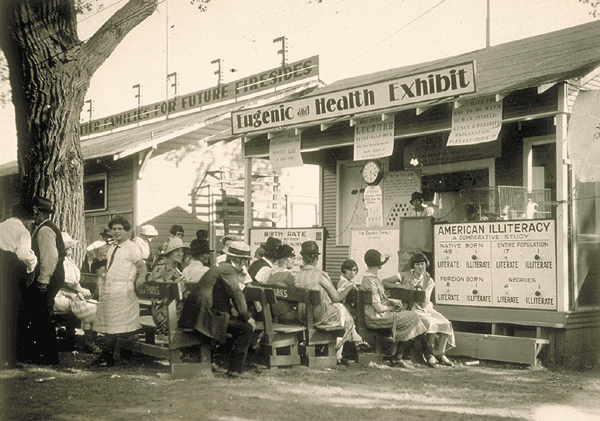Men were separated from women and children into separate buildings, where they were stripped of all clothing and valuables. Most clothing and valuables were steamed. Other items which might be damaged by steam (like shoes, hats, or belts) were exposed to cyanogen gas. Attendants examined the nude people for lice.[10] The officers conducting the strip searches were rumored to have photographed the nude women and shared the photos to others at bars.[12] When lice were found on a man, the man's hair was clipped close to his head and the clippings were burned. For a woman, the hair was doused in a mixture of vinegar and kerosene, wrapped in a towel, and left on the hair for at least 30 minutes. If lice were found on re-inspection, the process was repeated. Once attendants declared the lice test had been "passed", the naked people were gathered in a bathing area and sprayed with a liquid soap made of soap chips and kerosene oil.[10] After collecting their sanitized clothing and dressing, migrants were evaluated by a foreman, vaccinated and given a certificate that they had completed the procedure. From the disinfecting area, migrants then entered the Immigration and Naturalization Service building for processing.
By 1914, Venustiano Carranza had been sworn into office as Mexico's head of state ending the main fighting of the Mexican Revolution. Around 7:30 a.m.[14] on January 28, 1917, the riot began when inspectors attempted to remove Mexican women from their trolley, which they were riding to work. Ordered to disembark and submit to the disinfection process, 17-year-old Carmelita Torres refused, having heard reports that nude women were being photographed while in the baths.[15][3] Reports had also circulated that bathers might be set on fire, as had happened the previous year when gasoline baths at the El Paso City Jail had resulted in the death of 28 inmates when a cigarette ignited bathers.[16] She requested permission to enter without submitting to bathing and was refused. She then demanded a refund of her fare and upon refusal of a refund convinced the other women on her cable car to protest. The women began shouting and hurling stones at health and immigration officials, sentries and civilians, who had gathered to watch the disturbance. The majority of the early protesters were young, domestic workers employed in homes in El Paso but as the crowd grew to several thousand a mixture of people became involved. Four trolleys which had made early morning runs to collect workers on the Juárez side were seized and did not return to the El Paso side until mid-afternoon.[15]
Around 10 o'clock, General Andrés G. García drove to the center of the bridge to try to quiet the mob and was only partially successful, as the mob tried to prevent his car from leaving the Mexican side. By the afternoon, when it was clear that those who had entered the baths were not being harmed, the crowds were finally dispersed by mounted soldiers on each side of the border.[15] One cable car motorman and a mail coach driver were reported to have been beaten by rioters and several media movie makers were attacked.[17] Despite rumors that someone had been shot, Mexican authorities denied the event and reported that no serious injuries resulted.[18]
On the 29th rioting continued, but this time, the majority of rioters were men. Newspapers reported that the men were taking advantage of the bath disturbance to protest the Carranza regime and voice support for his rival Pancho Villa. Juárez Police Chief Maximo Torres ordered all rioters arrested and the Mexican cavalry dispersed the rioters from the bridge.[19] Business owners and households who were without laborers consulted with the Chamber of Commerce to resolve the issues promptly as most workers refused to come to work. Officials clarified that those who were not infected could be passed without having to bathe and that certificates were valid for a week.[20]
By January 30, precautionary measures taken by authorities on both sides of the border had quelled the rioting.[21] Two men and one woman were arrested at the American side of the bridge for assaulting a customs officer and an infantryman, but no further violence was reported.[22] Policemen from Juárez monitored the southern end of the bridge crossing, a Mexican health inspector Andrés García was present to maintain respectful treatment at the disinfection plant, and street car service between the two cities was suspended.[21] Notices had been posted in Juárez to advise that the inspectors in El Paso would accept health certificates issued by Mexican health inspectors.[23]








